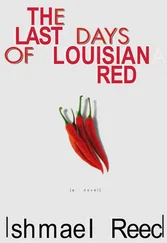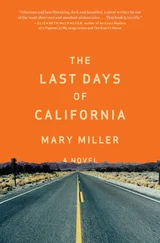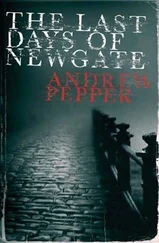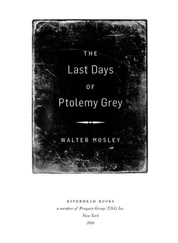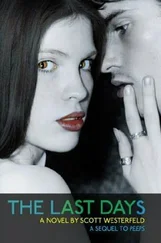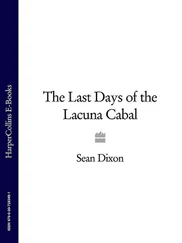At first the man would be extremely peremptory with any interruption. As time wore on, particularly in the small hours, when I was startled into awareness of myself by the lonely sound of some car or solitary pedestrian from the night outside (we didn’t close the curtains), if I raised a hand to ask for clarification, to suggest the source of some manif he described, to query some historical detail, he would listen more patiently. I would ask questions, and he might answer, and our interaction became an interview of excursuses, at times for an hour or more, before returning to the main track of Thibaut and Sam’s journey through the ruins of New Paris.
The man never told me his name, and I did not ask him.
He never referred to Thibaut in anything other than the third person, including when he showed me the notebooks. Of course, however, I became certain that Thibaut was he. In these notes, I’ve proceeded on that assumption.
This was deeply jarring. Because if, I wondered, I believed he was Thibaut, did I believe he was telling me the truth?
Of course it was absurd. But sitting there in that cheap chair exhaustedly listening to the visitor tell me about life-and-death battles, while London’s late-night traffic muttered outside, it didn’t seem so. It seemed possible, then plausible, then likely. That I was speaking to an escapee from New Paris, describing some old struggle.
Escaped from his place how? Come here why? I couldn’t bring myself to ask him. I was too cowardly, or too respectful, or too something, and then the opportunity was gone.
It’s hard for me to reconstruct it now, but I think I thought that this was only one chapter. That the story of Thibaut and Sam, and the more partial and uncertain backstory of the Villa Air-Bel, and of how New Paris came to be, was the first part of a longer history; that he would tell me more stories, of the years subsequent, and perhaps details of other places in that art- and demon-fouled world.
But during a second day he grew more agitated, more uneasy, and spoke with more and more speed. He rushed to reach the end of his story, of what were not, it transpired, the last days of New Paris.
When he was at last done with that—his relief palpable—I allowed myself to get up, to go to urinate for the first time in a long time. I’m not sure, but now I feel as if I remember, from the bathroom, hearing a door creak open, and close again.
In any case when I came back into the bedroom, the man and his satchel and his notebooks were gone, leaving me with pages and pages of my own scrawl, anguish, excitement, deep confusion, and the hotel bill.
—
I never saw him again. Nor, even with the expensive help of a private detective, was I ever able to track down the erstwhile acquaintance who had introduced us. I had only my notes, and the task with which I’d been—obviously, if unstatedly—left. It’s taken much work, but I’ve tried at last to discharge it here.
What I’ve written—as those who summoned me certainly knew I would—has been carefully extracted, distilled, and organized as best as I am able from the voluminous notes I made from the man’s rush of narrative. In several places, I have filled it out, even sometimes corrected what he said, as the result of my own researches. Again, I’m sure this was my given role.
Perhaps some readers will deem it unseemly for me not to have restricted myself to the most terse and dispassionate, even verbatim, reportage of what was told me. To them, I can only say that I am, more than anything else, a writer of fiction, and both the woman who contacted me and the man who met me knew that. Perhaps they were indeed merely making do, and would have preferred another reporter: perhaps, though, they wanted the story to be told with something of the register of fiction, to communicate a certain urgency that narrative can bring, that was vividly there in the man’s exposition. I’ve called the story “a novella” here, for decorum’s sake, and to justify the way in which I’ve told it. I don’t know if they would approve.
I’ve also appended a section of references. In organizing this report, and to understand even a little of the generative power of the S-Blast, I spent a very long time trying to source the manifs that the man described. Many, of course, were fairly obvious. The derivation of others he told me himself, often explaining that “Thibaut” knew. In some cases I have followed him in making them explicit within the story: others are in the notes below. The origin of a few of the manifs he did not reveal, or perhaps know.
During the course of our conversation, he mentioned many other phenomena and animate manifs, some of which I recognized or later identified, and all of which I recorded in my long notes on the city’s history, demonology, manifology, my drafts of an encyclopedia of New Paris. They are not dealt with here, as they featured in his story only as asides. All his offhand descriptions kept me breathless with a sense of how the war- and dream-ruined city must teem. The explorer in New Paris might encounter nudes descending staircases or brides stripped bare, composites in dark lines from Emmy Bridgewater, the nocturnal cats of Alice Rahon. Her mouth and eyes might be stopped up by butterflies, an assaulting echo of Winged Domino from Roland Penrose. Her watch could melt. Wilhelm Freddie’s mummy-wrapped horse-head figure might come for her; or a ripple-skirted dress from Rachel Baes, or Seligmann’s scuttling woman-legged stool; a swan-neck on dancer’s legs, manif from Teige. She might watch Picabia’s layered people crawl through each other, or see the hauling exhausted rattling red shapes of Eileen Agar’s reaping machine. A clergyman could crawl along her path, manifest from the film of Germaine Dulac. She might face Lise Deharme’s young girl in tatters. Hunt the spindly animal skeletons of Wols. Pick from trees laden with meat thrust between the paving slabs. Hide from darkly glowing solarized presences from Lee Miller and Man Ray.
The point, I hope, is clear. The streets of New Paris throng.
Of those manifs mentioned in this narrative, there are, I’m sure, many I’ve failed to identify. If I understand it correctly, it’s in the nature of the S-Blast that the bulk of its results are random, or manifest from the work of unknown artists—by which in Surrealist fashion, I mean people. These I could never possibly know. Other manifs I may not have recognized as such during the telling. There were also presences I feel sure derive from works I’ve seen, but that I’ve been unable to recall or track down. Someone more knowledgeable about art than I am may fill in the holes.
The literature on Surrealism is, of course, vast—there are far too many excellent books to list more than a fraction. Besides a huge stack of volumes of reproductions, several dictionaries and encyclopedias of Surrealism, collections of its manifestos and texts, a few of the volumes that I found particularly helpful in making sense of New Paris, as it was described to me, and in identifying the manifs, included Michael Löwy’s Morning Star; Franklin Rosemont and Robin Kelley’s edited Black, Brown & Beige: Surrealist Writings from Africa and the Diaspora; Penelope Rosemont’s edited Surrealist Women: An International Anthology; Michael Richardson and Krzysztof Fijałkowski’s edited Surrealism Against the Current; and Anne Vernay and Richard Walter’s edited La Main à plume: Anthologie du surréalisme sous l’Occupation.
Just why the visitor and the woman wanted the history of New Paris told I have no idea. I feel it may be germane, somehow, that a good number of the manifs seem to originate in artworks that, in our world, post -date the moment of the S-Blast in theirs. What that might say about the relations between our realities—whether there are certain pieces that insist on being born, whatever the contingencies of a timeline, whether there are certain manifesting forces that reach across what might otherwise seem impermeable barriers of ontology, taking or leaving traces—I don’t know.
Читать дальше

